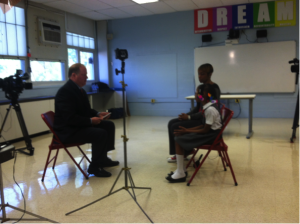National Charter Schools Week is April 30 – May 6!
To celebrate National Charter Schools Week 2017, The Center for Education Reform is shining a spotlight on positive outcomes our nation’s charter schools are achieving for our children.
Each day we’ll be posting more features that highlight how charter schools are making a positive impact and improving American education – check back here daily!
May 1 – Salute to Charters
May 2 – Choice
May 3 – Flexibility
May 4 – Innovation
GET INVOLVED
For the movement to grow and meet the demand of parents in need of education alternatives, it’s essential to showcase the hard work charter school leaders and educators are doing day in and day out. Help celebrate #CharterSchoolsWeek by signing and sharing the pledge to support public charter schools!
FACTS & INFORMATION
Fast Facts on Charter Schools Today (for more information on Charter Schools, visit the Charter School Facts & FAQs page)
- Demand for charter schools remains strong, with over 1 million students on charter school wait lists around the nation.
- Independent charter authorizers play an essential role in the health of the charter school movement. An authorizer other than a local school board has granted over 60 percent of charters across the country.
- Charters serve a more disadvantaged student population compared to traditional public schools, including more low-income and minority students. Sixty-one percent of charter schools serve a student population where over 60 percent qualify for the federal Free or Reduced Lunch Program due to their family’s low income.
- Charter schools receive 36 percent less revenue per student on average than traditional public schools, and, unlike other public schools, most do not receive facilities funds.
Check out more impactful stories on charter schools:
Blog #1: An “Academic Dynasty”
Blog #2: Engaging the Next Generation


















